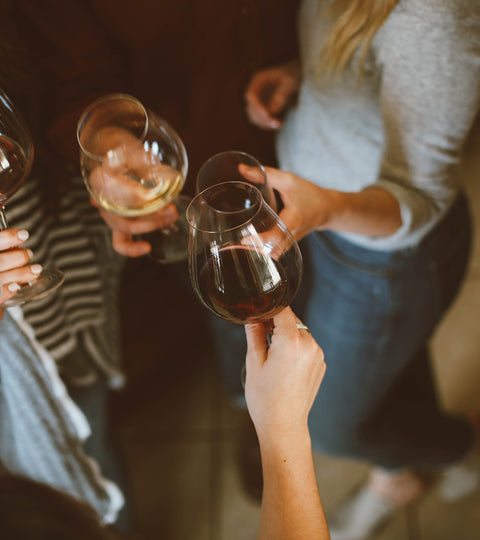Wine and Rituals
The wine? There is more flavor if ritualized
Wine consumption is characterized by strong ritual elements. And we are not just talking about those connotations linked to religion, such as the moment of transubstantiation which transforms wine into the Blood of Jesus Christ. More generally, and in a more profane way if you like, the consumption of wine has always lent itself to a spectacular ceremony made up of gestures, languages and meanings with profound symbolic value. Just think of opening a bottle of wine, which is often associated with a moment of pleasure, sociability, or friendship. Even the choice of wine has evident ritualistic connotations. Sitting in a restaurant, perhaps for a romantic meeting, the choice of wine is an integral part of a ritual that tends to affirm a certain male identity in the sense of savoir-faire towards women. The French anthropologist Arnold Van Gennep (1909) explained to us that ritual is a process that has deep cultural roots that serves to carry out a social action of vital importance for human beings, the passage. For example, the Friday evening aperitif is a ritual that facilitates the transition from the working week to the weekend. Durkeheim (1912) elaborates another fascinating theory: ritualization as a process that has the aim of demarcating the sacred from the profane. Just think about how much care we choose, preserve and taste certain bottles that we consider more important (or sacred) compared to others that are less important (or more profane).
The ritual experience.
Rituals have always had a mysterious, almost magical aura with a high experiential power. To put it with an influential anthropologist, Mary Douglas (1989), man is a ritual animal who finds satisfaction only when his actions are organized in a ritualistic sense. This satisfaction derives not so much from the typical repetitiveness of ritual action, but from 'set of rules, ways of doing things, gestures, and even languages that together give meaning to things. Would you drink a Barolo and a more modest bulk wine in the same way? A classic method or a common sparkling wine? Certainly not. If expertly ritualized, the action of drinking wine is capable of providing an incredible tasting experience, such as the sommelier's tasting ritual.
An integral part of the experience is also the performance of the ritual role. Typically, there is that of the wine connoisseur. Often, it's not just about choosing a wine. The ritual role is a real social role. When choosing a bottle in front of friends, the wine connoisseur promulgates his social qualities as a connoisseur and leader. With a very effective image, we could identify the role of the wine connoisseur as that of a shaman, who helps the rest of the tribe to find full satisfaction from tasting.
The ritual is also fun. It's like a game, a playful scheme, which produces a moment of leisure or escape. This is because the ritual takes place within an extraordinary dimension of life, in the sense that the ritual is disconnected from the repetitive and monotonous actions of everyday life. Because it is extraordinary, the ritual experience is capable of producing strong emotions that tend to be remembered over time.
Another fundamental aspect linked to the ritual experience is the place, that is, the physical space in which the ritual takes place, such as a ' square ', a vineyard, a modern wine bar or even an old tavern. In a ritual context, these places have a profound symbolic value, in the sense that they are often true places of worship where adoration of the god Bacchus is perpetuated. The ritual place is a sacred place where the ideology for wine is cultivated, a faith is practiced, one's own identity is built. These places play an extremely important part in people's lives and are therefore chosen with great care and devotion, also becoming an important social meeting point.
The aggregation factor is in fact a typical function of ritual because it facilitates social exchange, uniting individuals in a moment of collective consumption or what we could today call community . There are many examples of community in the wine ritual, such as the city nightlife that gathers together during the evening aperitif. Or the small group of wine enthusiasts who itinerantly visit different wine regions in search of new food and wine experiences. Then there are the more nuclear forms of ritual community, such as birthdays, weddings, family celebrations in general. The focal point of the ritual community is being together or the ritual is that social link that gives added value to the consumption of wine.
In conclusion, it can be said that if expertly ritualized, the consumption of wine is more satisfying, because it is capable of providing an extraordinary experience. Today, however, there is a broad consensus among experts in maintaining that the pleasure of wine comes above all through the tasting experience in terms of organoleptic characteristics. Ritual is the other equally important aspect, which we often forget to promote.
Luigi Servadio, Ph.D.
if you want to read more about wine and rituals you can buy my new book "Customer Rituals" at this address:

